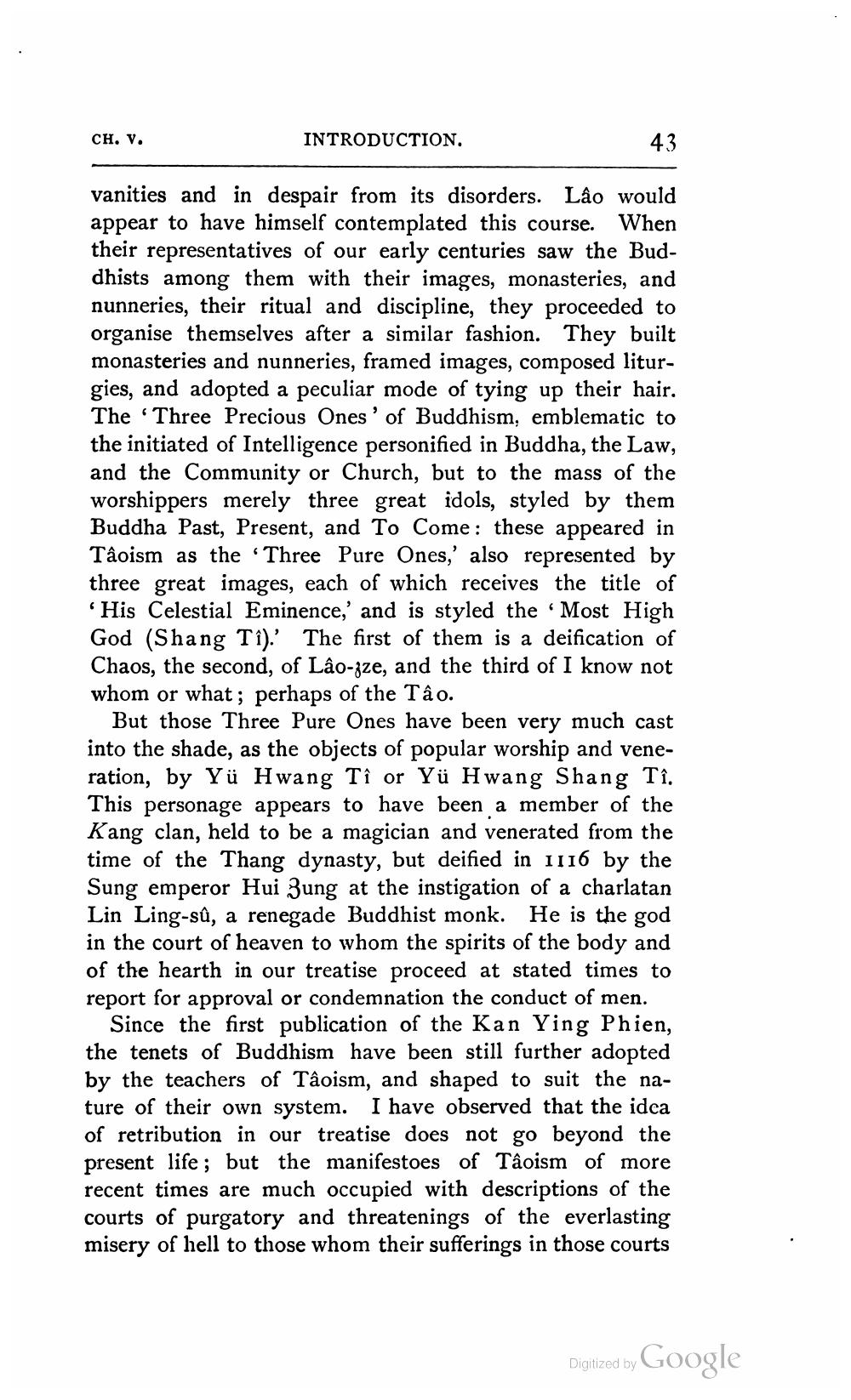________________
CH. v.
INTRODUCTION.
43
vanities and in despair from its disorders. Lâo would appear to have himself contemplated this course. When their representatives of our early centuries saw the Buddhists among them with their images, monasteries, and nunneries, their ritual and discipline, they proceeded to organise themselves after a similar fashion. They built monasteries and nunneries, framed images, composed liturgies, and adopted a peculiar mode of tying up their hair. The 'Three Precious Ones' of Buddhism, emblematic to the initiated of Intelligence personified in Buddha, the Law, and the Community or Church, but to the mass of the worshippers merely three great idols, styled by them Buddha Past, Present, and To Come: these appeared in Tâoism as the 'Three Pure Ones,' also represented by three great images, each of which receives the title of
His Celestial Eminence,' and is styled the Most High God (Shang Tî). The first of them is a deification of Chaos, the second, of Lâo-zze, and the third of I know not whom or what; perhaps of the Tâo.
But those Three Pure Ones have been very much cast into the shade, as the objects of popular worship and veneration, by Yü Hwang Tî or Yü Hwang Shang Tî. This personage appears to have been a member of the Kang clan, held to be a magician and venerated from the time of the Thang dynasty, but deified in 1116 by the Sung emperor Hui Zung at the instigation of a charlatan Lin Ling-sû, a renegade Buddhist monk. He is the god in the court of heaven to whom the spirits of the body and of the hearth in our treatise proceed at stated times to report for approval or condemnation the conduct of men.
Since the first publication of the Kan Ying Phien, the tenets of Buddhism have been still further adopted by the teachers of Tâoism, and shaped to suit the nature of their own system. I have observed that the idea of retribution in our treatise does not go beyond the present life; but the manifestoes of Taoism of more recent times are much occupied with descriptions of the courts of purgatory and threatenings of the everlasting misery of hell to those whom their sufferings in those courts
Digitized by Google




